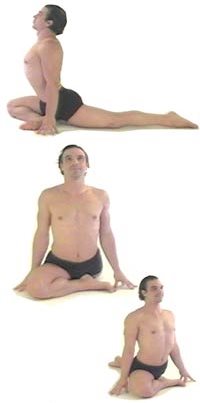 I’d love to meet the first yoga teacher who told students to take the knee out to the side of the hip in pigeon pose.
I’d love to meet the first yoga teacher who told students to take the knee out to the side of the hip in pigeon pose.
Pigeon pose, as it is commonly known, is a preparatory pose for the more advanced eka pada raja kapotasana (one legged king pigeon in Sanskrit).
I think the alignment of the outer knee and the outer hip is very important.
Pigeon pose, an all-time favorite, is a piriformis muscle stretch when you extend forward over the front knee.
The piriformis muscle, along with the psoas major and gluteus maximus, is one of only three muscles that connect the legs to the spine.
It helps to stabilize the pelvis as well as turn the leg out in external rotation.
I think that almost everyone tucks their pelvis under too often and subsequently leans backward through life.
If you are one of those people, your piriformis is likely tight or weak or both. Piriformis problems are often related to sciatica and piriformis syndrome.
The closer the knee and the hip are to aligning parallel with the side of the mat the deeper the stretch will be in the piriformis.
Once the knee is aligned with the hip, students can start moving their shin parallel to the front of the mat, increasing the intensity of the stretch to the piriformis.
The pelvis should be squared off with the sit bones at the same height and the outer hips (greater trochanters) in a line parallel to the front of the mat.
The alignment of the knee and the hip is critical for both the stretch of the piriformis and for lengthening the IT Band.
Knee pain in pigeon pose caused by tight IT bands could be the reason for taking the knee out to the side.
As soon as the knee goes out to the side wider than the hip, the IT band releases and the tensor fascia latae, the muscle of the IT band, is taken out of the pose as it relaxes out of tension, or worse engages to pull the knee out to the side.
This defeats the whole purpose of the pose.
We want to work the length of the IT band along with the stretch of the piriformis.
Here are two different ways to address the knee pain which might occur when aligning the knee with the hip:
1. Pay attention to the alignment of the foot and ankle in relation to the alignment of the knee. This will balance the ligaments of the knee (a future post).
2. Lift the pelvis higher, making it easier to square the hips and relieve some of the tension between the hip and the knee.
Pigeon pose in all of its forms is a great way to stretch and change the all-important piriformis muscle. While a tight piriformis can be the bane of our existence, a happy piriformis will likely be the answer to our physical prayers.
***
